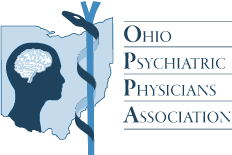Complete Story
11/07/2017
HPIO Plans Comprehensive Policy Review of Efforts Implemented to Solve Ohio’s Opioid Addiction Crisis
Source: Health Policy Institute of Ohio
The Health Policy Institute of Ohio (HPIO) is conducting a comprehensive policy review of efforts to solve Ohio’s opioid addiction crisis. The review seeks to establish evidence-based strategies that have supporting outcomes data.
Opiate addiction and the rising number of overdose deaths in Ohio have dominated news headlines in recent years. In 2015, Ohio had the third highest drug overdose death rate in the country. Between 2010 and 2016, unintentional injuries surpassed cancer as the leading cause of premature death in Ohio, and more than 70% of accidental deaths are because of drug overdoses. Unintentional drug overdose deaths alone (a subcategory of unintentional injuries) became the second leading cause of premature death in Ohio in 2016, surpassing heart disease.
Prescription drug overdose deaths (excluding fentanyl) peaked in Ohio in 2011 and opioid prescribing peaked in 2012. As prescription opioid deaths were declining, deaths from heroin and fentanyl rose substantially, and studies have found that many heroin users first became addicted to prescription pain killers before transitioning to heroin. In recent years, Ohio has also seen a growing number of overdose deaths involving cocaine and benzodiazepines.
These trends indicate that although policy changes may reduce the supply of one type of drug (such as prescription opioids), other drugs may emerge and be widely used unless the underlying demand for addictive substances is also reduced through effective prevention and treatment.
Given the complexity of addiction, and its far-reaching consequences, policymakers in Ohio have embraced the need for a comprehensive approach. The Governor’s Cabinet Opiate Action Team, for example, brings together several state agencies to combat opiate abuse across the sectors they serve, and the Ohio House of Representatives’ Speaker’s Task Force on heroin, opioids, prevention, Education, and Safety (HOPES) is holding meetings across the state to gather input from medical professionals, addiction experts, and the public at large.
- Quickly find existing information about what works
- Review addiction policy changes enacted in Ohio in recent years
- Assess the extent to which new policies align with existing standards and evidence
- Identify areas where Ohio policy can be better aligned with standards and evidence, including potential gaps in Ohio’s response to the opiate crisis.
- Resource page: Hub for clinical standards/guidelines, expert consensus statements/recommendations, model policies, and evidence registries
- Policy inventory: List of legislation, regulations, funding allocation amounts, practice guidelines, state agency initiatives, and legislative initiatives
- Policy scorecard: Analysis of strengths and gaps in Ohio’s policy response to addiction.
HPIO will develop these tools in phases, starting with prevention, treatment, and recovery. Future phases will address harm reduction, overdose reversal, surveillance and evaluation, children services, law enforcement, and criminal justice reform depending on resource availability and capacity.

